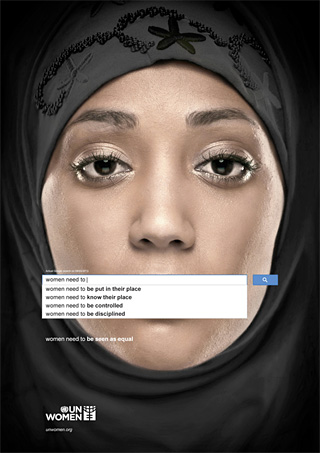Part of a series of posts about great film, web, or design artists and their work abuzz online and in-person.

UN Women "Women Need To…" ad by Ogilvy & Mather Dubai
- “The New, Old Way to Tell Stories: With Input From the Audience” by Karen Swallow Prior (The Atlantic) discusses “The Lizzie Bennet Diaries” and their use of Twitter and Facebook to engage and involve their audience. (via Matt Checkowski)
- “Amazing Short Film: The Race to Develop a Machine that Stops Time” by Charlie Jane Anders (io9) highlights the short film “The Decelerators” by Mark Slutsky, where a time machine is built to slow time down, not skip around. (via Joe Carlson)
- “Powerful Ads Use Real Google Searches to Show the Scope of Sexism Worldwide” by David Griner (AdWeek) looks at the first few results auto-suggested by the search engine based on popular queries for UN Women. (Unrelated to this print campaign, in 2010, Google ran a series of ads that took a positive spin, called “Search Stories.” The first one premiered during the Super Bowl and also quickly net a million views online.)
- “Why are the studios NOT making more movies for the largest demo groups?” by Scott Myers (Black List) on Nielsen data earlier this year for movie goers (who have attended once between 2010-2012) and how what they see compares to what studios tend to greenlight.
- “Why Do We Eat Popcorn At The Movies” by Natasha Geiling (The Smithsonian) on the economics of handing over something (initially) very cheap that people like.


Commentary
Got something to add?